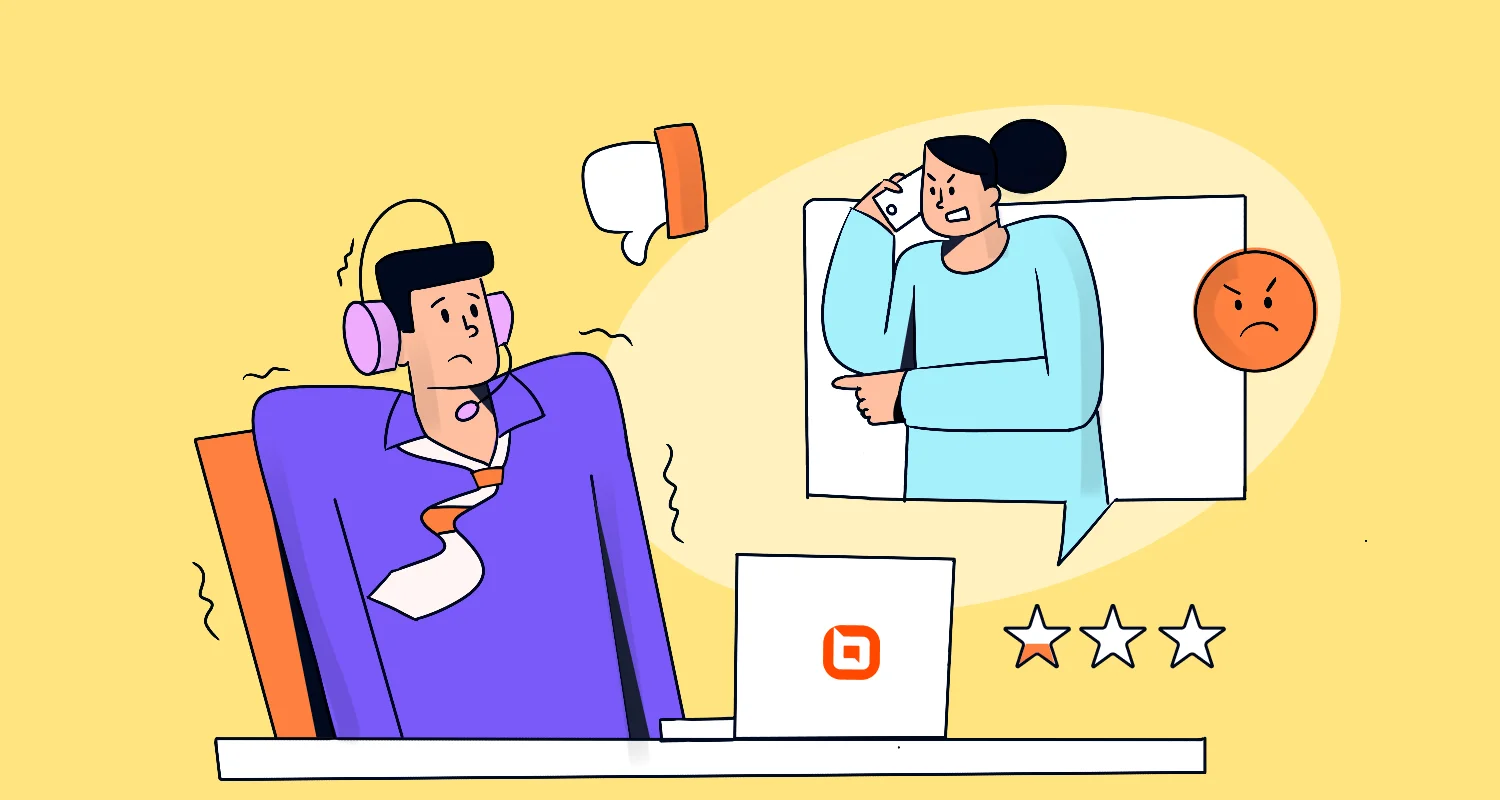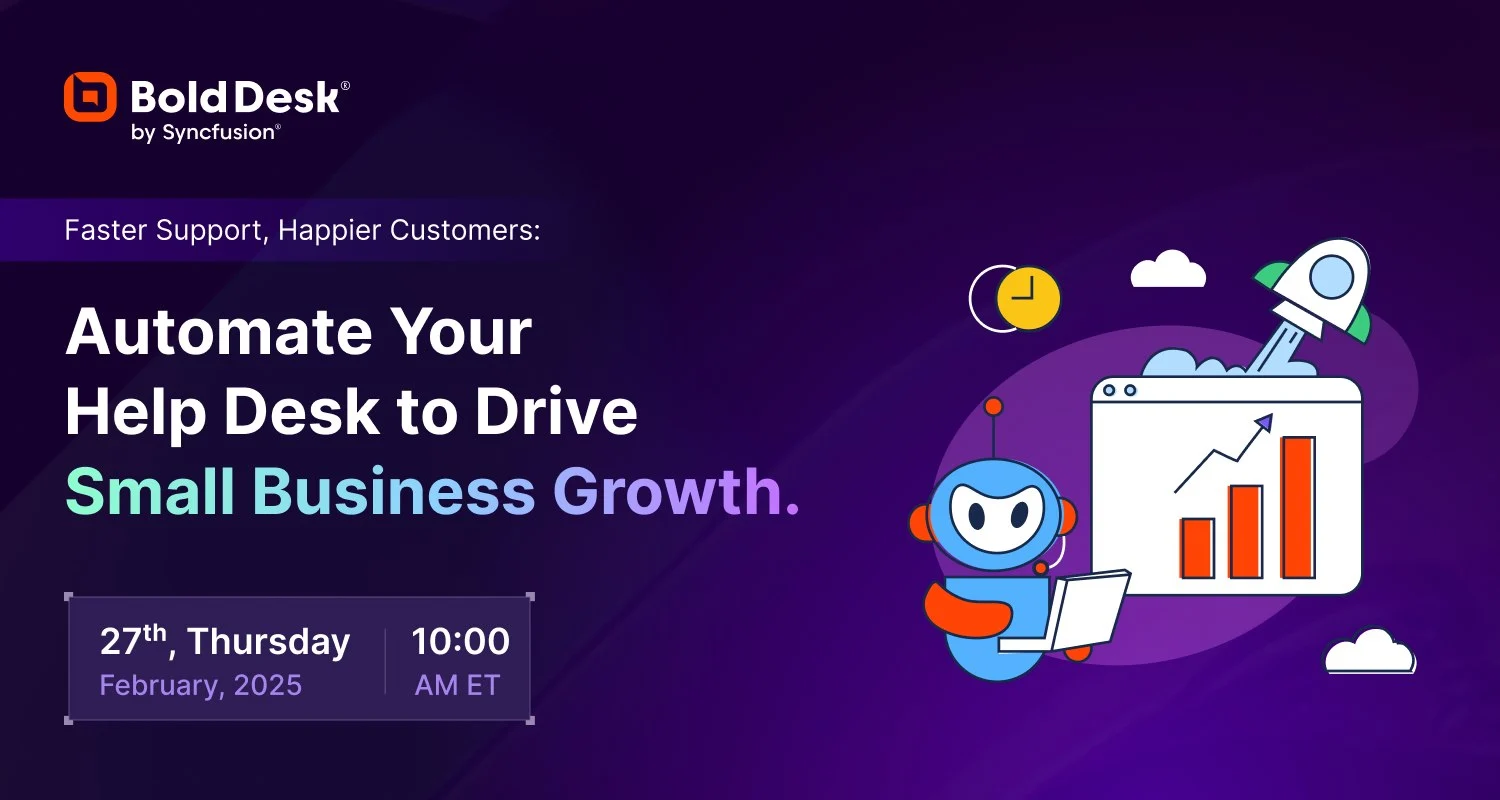The many available communication options can easily overwhelm support agents as they switch between different platforms to interact with customers. Omnichannel customer service solves this problem by allowing support agents to manage all customer requests through a single platform.
In this blog, we’ll define omnichannel customer service, explore its key features, discuss its importance, and offer strategies to make it effective.
What is omnichannel customer service?
Omnichannel customer service is an approach that support agents use to manage customer interactions across different channels from a single inbox. This creates unified and consistent interactions across multiple platforms, ensuring a smooth experience for the customer.
One example is when a customer reaches out to support through a website to ask about their return policy. When they notice that their issue isn’t resolved quickly, they visit the store in person. The support agent can access the customer’s conversation history with an omnichannel inbox.
This means the customer doesn’t have to repeat themselves, and the agent can promptly help them. This seamless experience makes the process faster and more efficient for everyone involved.
Common communication channels include:
- Phone call
- Live chat
- Social media platforms such as X, WhatsApp, Instagram, etc.
- SMS
- Self-service options
It’s important to note that all customer files and messages will be received in real-time, making it easier for support agents to handle customer requests seamlessly.
Multichannel vs omnichannel customer service
The two terms, omnichannel and multichannel, can be confusing. However, they have different features and functions that distinguish them.
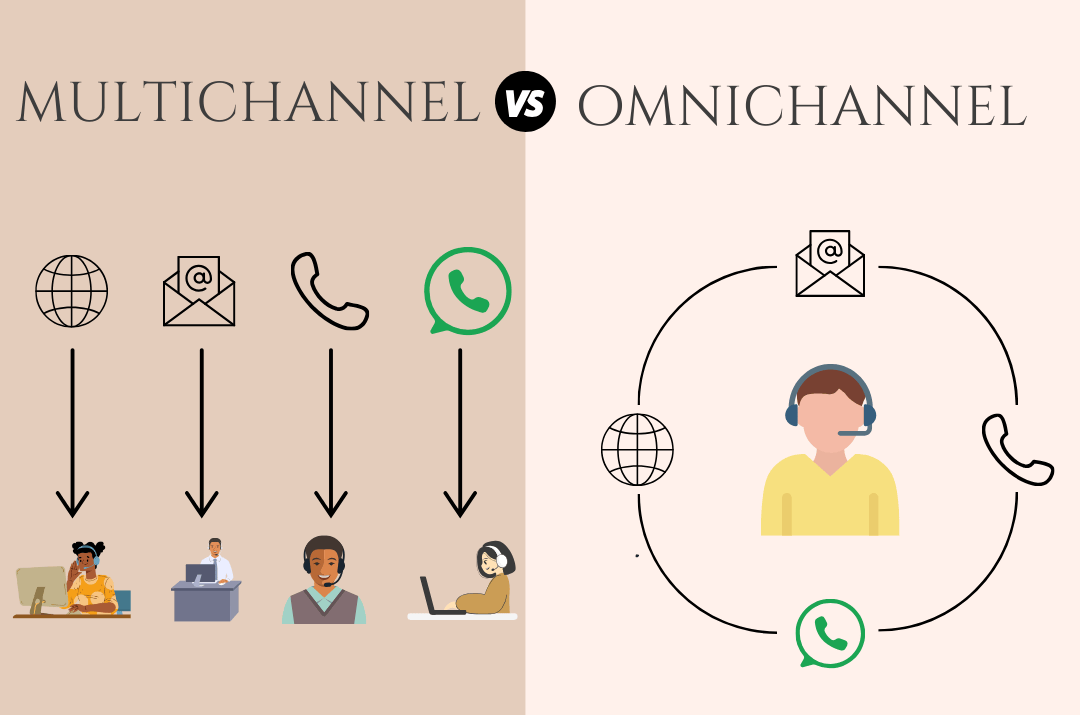
Multichannel support is a concept that occurs when a business provides different forms of contact to its customers. Each of these communication channels is independent and is managed separately from each other. A support agent will be forced to constantly switch between the communication channels to ensure customer requests are promptly responded to.
Since the communication platforms are not interconnected, the support responses will be slower, which can easily lead to unhappy customers.
Omnichannel support, on the other hand, allows customers to contact agents using their preferred communication channel. With omnichannel customer service, both agents and customers can switch from one communication platform to another without losing context. This means all the conversation history will be stored and moved from the preferred communication channel to the omnichannel inbox.
This leads to positive customer service experiences through fast responses and a reduced average handling time.
| Multichannel support | Omnichannel support | |
| Definition | This involves providing customers with different communication channels with each functioning independently. | It manages all customer interactions from different communication platforms, such as social media platforms, phone, email, etc., in a unified inbox for a seamless and consistent experience. |
| Purpose | To provide customers with multiple communication channel options that operate independently. | To provide customers with personalized, fast, and seamless interactions with the support team. |
| Case example | A customer calls the support team, and their issue is successfully resolved after engaging with the support agent. Later, the customer realizes they have more concerns and reaches out again, using live chat. Unfortunately, they have to repeat their previous concerns so the support team can understand the context of the conversation before providing assistance. | A customer expresses their concerns through a chatbot but realizes they need personalized support. They decide to switch to live chat. This time, they don’t have to repeat themselves, as the communication history is accessible using an omnichannel inbox. As a result, their issues are resolved more quickly and efficiently. |
Why is omnichannel service important?
If you want to offer convenient customer service, think about having an omnichannel customer service strategy.
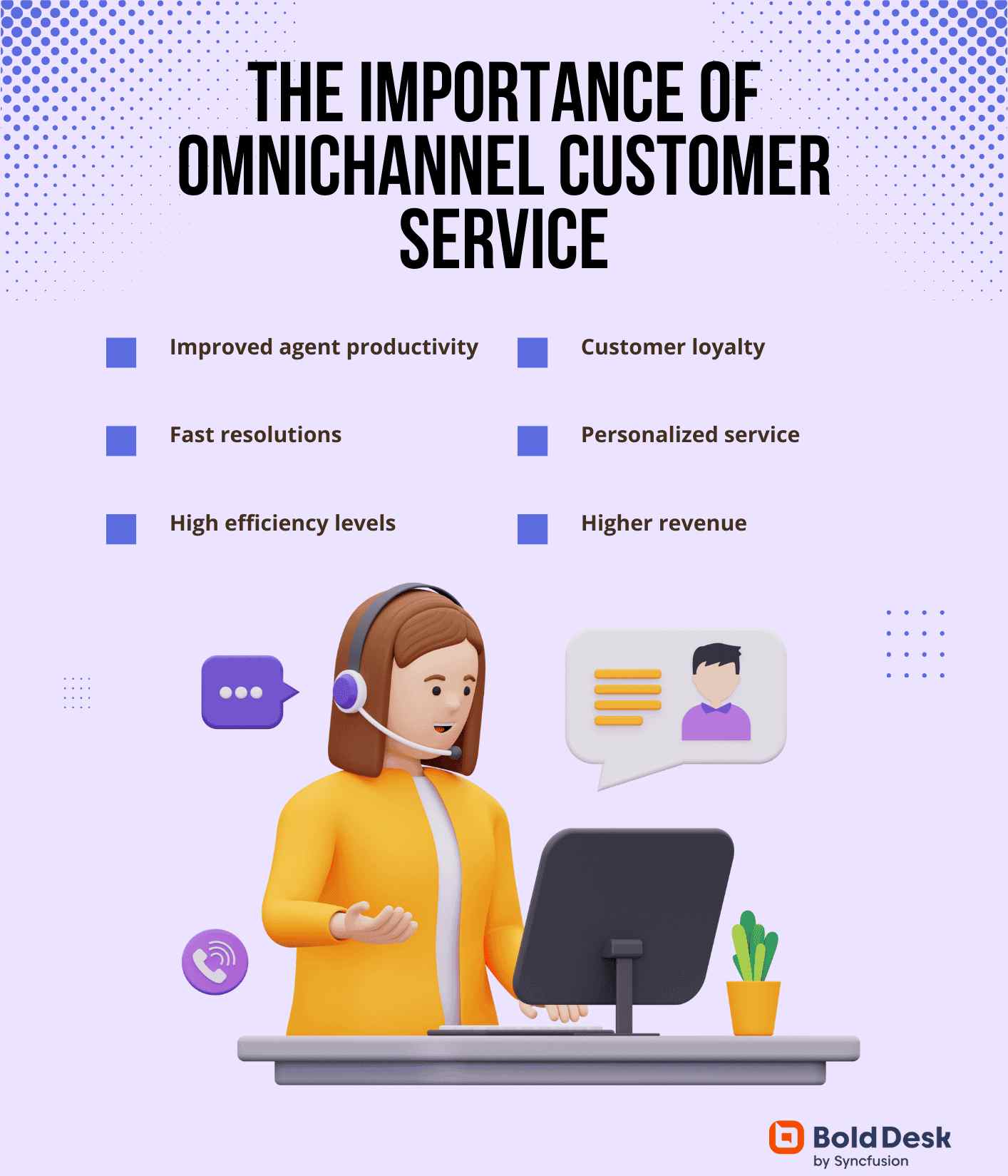
- Improved agent productivity: In an omnichannel inbox, agents no longer have to switch between applications to respond to customer concerns. This reduces average handling time, making agents more productive.
- Prompt resolution of customer requests: All requests come in through a single platform with an omnichannel inbox. This makes it easy to respond quickly and resolve customer issues efficiently.
- High efficiency: Artificial intelligence (AI) provides information, and all tasks are automatically routed to agents, making it easier to address all customer issues. This leads to highly efficient support agents.
- Increased customer loyalty: Up to 93% of customers are likely to stay loyal to brands that offer good customer service. Omnichannel inbox streamlines support, leaving customers with no choice but to always remain with your brand.
- Offering personalized customer service: Using insights on customer needs and market trends, it becomes easier to personalize customer support experiences with an omnichannel service. One report indicates that 80% of customers are more likely to purchase online because of personalized experiences.
- Higher revenue: Omnichannel customer service streamlines support, reducing customer churn rates. Retaining customers leads to increased revenue collection.
Ways to build an effective omnichannel customer service strategy
What we do today will shape our future. Having a strategy is the perfect way to use the present state of your business or company to plan adequately and appropriately for the future.
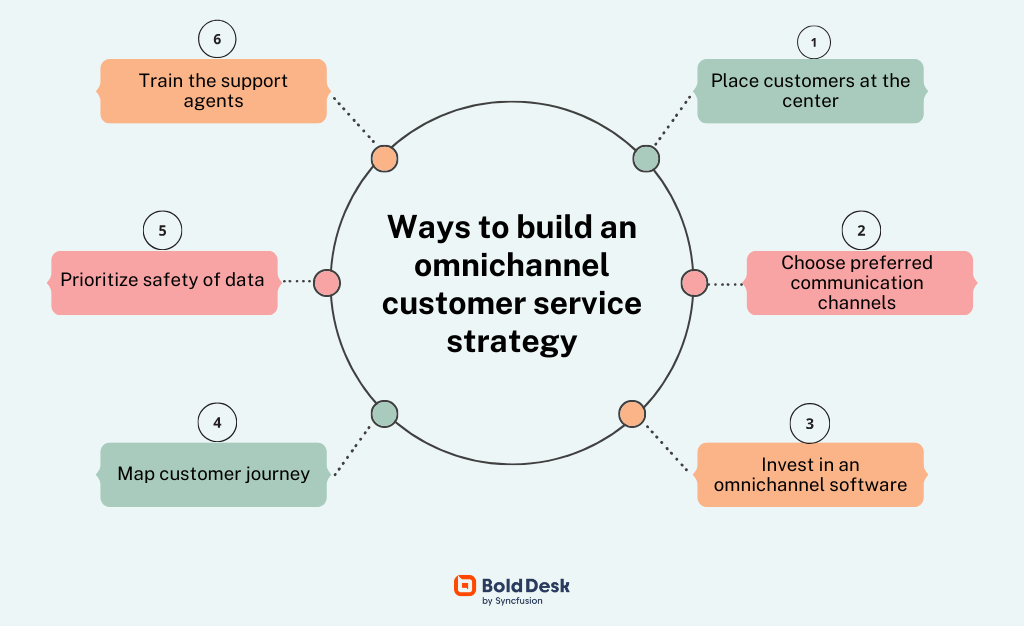
Here are steps you can easily follow to create an omnichannel customer service strategy.
Place your customers at the center
To make your omnichannel customer service strategy effective, always prioritize your customers. Invest more in channels that are most preferred by your customers instead of applying a one-size-fits-all approach.
A report by Statista shows that most customers aged 25 to 40 prefer emails and text messages over phone calls.
Additionally, most of them also prefer social media platforms like TikTok for customer engagement. Therefore, to enhance support experiences, prioritize the most preferred communication channels, such as emails, messages, and social media. This targeted approach will help you provide better support and improve customer satisfaction.
Choose communication channels preferred by customers
Customers have unique preferences, especially regarding their preferred mode of communication. However, they are united by the need for fast and reliable customer service.
With omnichannel customer service, businesses can seamlessly offer diverse support across various platforms—social media, phone, in-person visits, or email.
This is because omnichannel customer service allows agents to seamlessly handle all customer requests from multiple communication channels in a unified inbox.
While this might seem challenging, research shows that businesses with a strong omnichannel customer engagement retain upto 89% of customers.
An omnichannel strategy will address all customer inquiries regardless of how the customers reach out.
Invest in an omnichannel platform
Shifting from a multichannel to a unified customer service platform offers significant rewards. Using omnichannel inbox software, you can integrate all communication channels—such as live chat, phone calls, emails, and social media—into a single inbox.
This setup allows your support team to access customer interactions easily without losing context.
With this in place, you eliminate the need to constantly switch between different platforms when interacting with customers. This streamlines customer engagement, enhances agent productivity, and reduces customer service response times.
Customers benefit from a faster, more convenient service, leading to satisfaction and loyalty.
Map customer journey
Start mapping the customer’s journey from their point of awareness of your brand or product to after-purchase. An omnichannel customer support strategy is meant to streamline and manage customer interactions effectively.
This is not possible without tracking the customer journey. Utilizing tools like customer relationship management (CRM), surveys, and analytics, you can gather customer data based on current and previous interactions.
The insights will provide you with information on customer pain points and customer touchpoints. This will be used to identify areas for improvement and challenges that need to be resolved to provide a high standard of omnichannel customer support.
Valuable insights gained can be used to offer proactive customer service, taking omnichannel customer support to the next level.
Prioritize customer data safety
To build customer trust, you must assure them that their data is safe and their privacy cannot be compromised.

Security features like encryption, audit logs, single sign-on (SSO), and IP restrictions work together to keep your data safe on multiple security levels. Only the people allowed will be given access to the customer’s information when required.
Other top features that you can use to enhance security include:
- Google Authenticator: An application that verifies identity using time-based code.
- Two-factor authentication (2FA): A second form of verification that is used in addition to your password. It acts as another layer of security enhancing data privacy and safety.
With these measures in place, there’s a minimized risk of vulnerability to cybercriminals or unauthorized personnel.
Train your support agents
While technology has made support services easier, highly skilled and knowledgeable support agents are still important. Agents must be trained to provide a top customer service experience, including how to solve complex problems and how to interact with customers.
This provides them with the necessary skills and expertise to provide a more personalized customer experience while maintaining consistency.
Training can be done through:
- Workshops
- Seminars
- Online training sessions
- One-on-one coaching and mentorship sessions
- Knowledge-sharing through cross-functional teams
Omnichannel customer care use cases and examples
Currently, most communication channels are online. To reach out to customers effectively, companies have adopted omnichannel support.
Let’s look at some companies that have successfully adopted an omnichannel customer service platform.
Sephora
Sephora is a beauty products company with various retail stores. Its omnichannel strategy has been key to ensuring that it provides excellent support services to its customers quickly and reliably.
The brand has a website, a mobile app, and physical retail stores. With these options, customers can create an account to track their interactions and receive discounted offers.
Additionally, customers can find self-help guides, browse, purchase, and offer product reviews. In case of customer concerns, they can use self-help tutorials or receive expert opinions from support agents. This has improved their brand perception and led to customer loyalty.
Chase Bank
Chase Bank is a banking company with different locations spread across the US. They provide their customers with communication channels, such as websites and mobile apps.
With an omnichannel strategy, customers can easily transfer money or deposit checks without meeting a bank teller or logging in to their bank account.
Customers can manage their bank accounts faster and more conveniently, assuring them of the safety of their funds and accounts.
Other omni channel customer service use cases
Companies in different sectors have evolved to omnichannel support, which cuts across industries and sectors other than SaaS brands. Although the structures may look different, they share a similar concept of providing customers with seamless services, notwithstanding the communication channel used.
The following are some examples to shed light on the concept:
- Service marketplace: Companies such as Fiverr, Upwork, etc. are platforms where clients can post their tasks for workers to easily access. Once a task is confirmed through the website, it can be accessed via email or the website. Communication can be done through the website, phone calls, emails, etc. These are monitored under one platform, streamlining the workflow and experiences.
- E-commerce: Most e-commerce platforms provide support across multiple communication platforms. They require an omnichannel customer service strategy to maintain higher levels of customer engagement and provide a seamless customer journey.
Challenges of omnichannel customer support
Omnichannel support is increasingly becoming necessary for companies that want to provide excellent customer service. However, some challenges have made implementation a difficult process. Let’s look at them.
- Implementation: A fully operational omnichannel strategy requires a lot of time and resources, making it difficult for some companies.
- Inventory data management: Managing inventory, especially for retailers without employee training, leads to bad customer service.
- Expense and complexity: An omnichannel support strategy requires a lot of investment in money and time for it to be successful and robust. Creating a unified system is very expensive and requires training for support agents to use it effectively.
- Security: Integrating all communications into an omnichannel platform has significant security risks, especially for third-party vendors. When security is compromised, important client information will be stolen, which can severely damage a company’s reputation and customer relations.
Redefine your customer support with omnichannel customer service
Support services have evolved as more customers and agents work remotely with different communication platforms. Customers always expect positive experiences irrespective of the communication channel they use. Omnichannel customer service simplifies meeting these expectations, including businesses that operate in silos.
Though adopting an omnichannel support strategy may present challenges, BoldDesk® offers solutions to maximize its potential. Our omnichannel inbox integrates messages from all channels into one unified inbox, enabling agents to address customer issues seamlessly and efficiently.
Try our 15-day free trial or schedule a live demo today. Also, contact our support team for further information.
Related articles
- Top-Notch Customer Service in BoldDesk: Live Chat and Omnichannel Support for Seamless Service
- Tips and Examples of Customer Service Management
Frequently Asked Questions (FAQs)
- What is the difference between omnichannel and multichannel customer service?
Omnichannel customer service involves integrating multiple communication channels in a single unified inbox to deliver consistent and reliable services.
Multichannel customer service involves providing customers with various communication channels, such as live chat, Facebook, phone calls, emails, etc., and working independently.
- Which software provides the best omnichannel customer service?
BoldDesk® is highly reliable help desk software for improving and managing support. Its features include a ticketing system, AI, automation, live chat, omnichannel support, and more.
- How can an omnichannel customer experience lead to customer satisfaction?
An omnichannel customer experience enhances interactions with support agents who no longer have to switch between communication platforms when offering support. This streamlined interaction with customers leads to customer satisfaction and loyalty.
- What communication platforms are supported by omnichannel customer service?
Emails, live chat, website chat, WhatsApp, Facebook, phone calls, in-store visits, and any other communication platform available.
- What are the benefits of an omnichannel customer service?
- Fast resolution of customer concerns
- Boosted brand perception
- Customer loyalty
- Personalized customer service
- Increased revenue


